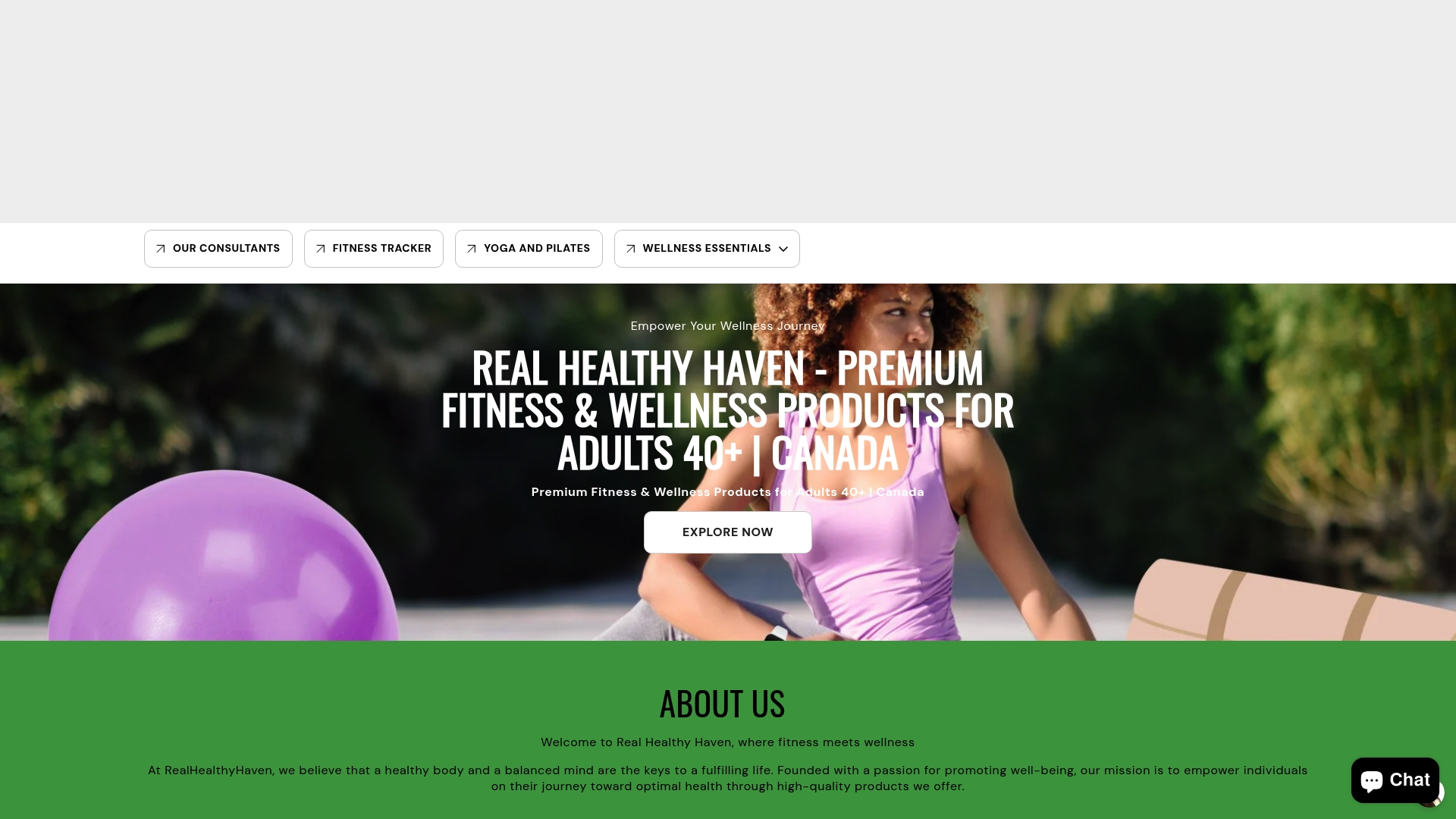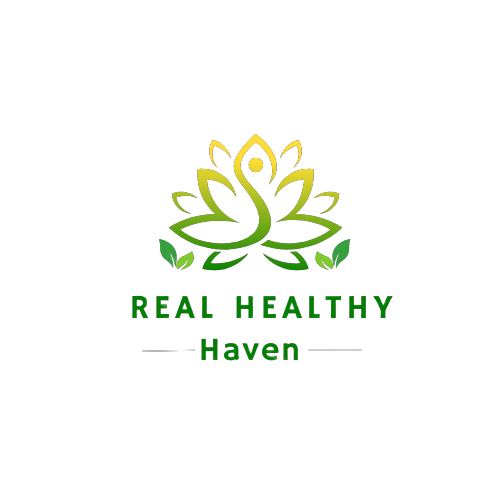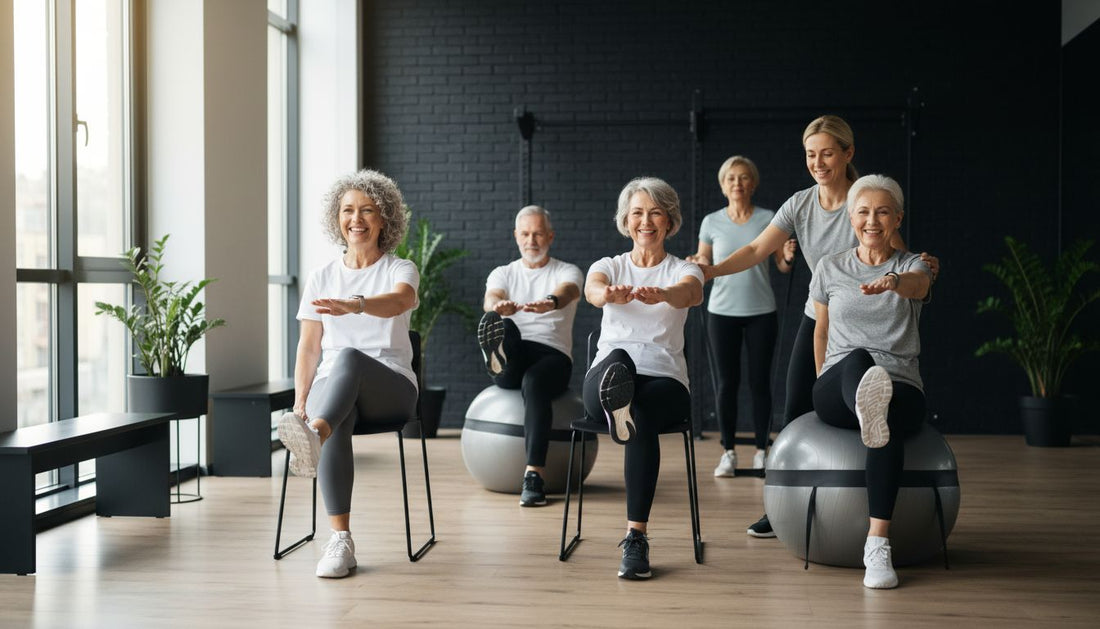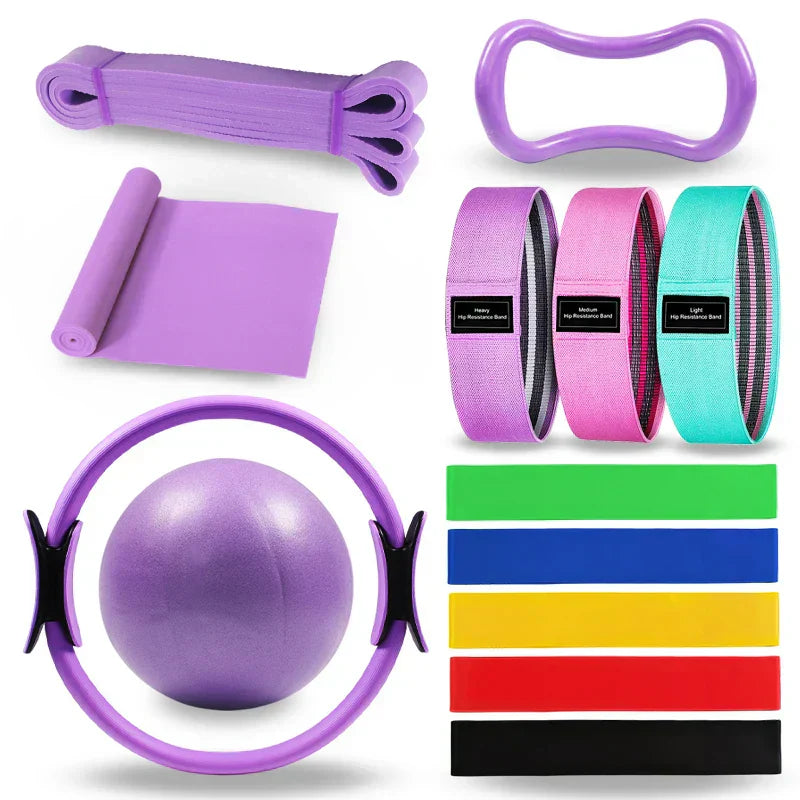Did you know that adults lose about 3 to 8 percent of muscle mass each decade after age 30? This decline affects balance, stability, and independence as you grow older. By focusing on gentle but effective core strengthening routines, you can protect your mobility, lower fall risk, and feel more confident in your movements every day. Simple exercises and supportive routines can make a real difference for aging adults who want to stay active and safe.
Table of Contents
- 1. Start With Basic Core Activation Exercises
- 2. Incorporate Stability Ball Workouts For Balance
- 3. Try Low-Impact Pilates Core Moves
- 4. Use Resistance Bands For Added Challenge
- 5. Strengthen Core With Chair-Based Routines
- 6. Monitor Progress With Smart Fitness Devices
- 7. Maintain Consistency For Lasting Benefits
Quick Summary
| Takeaway | Explanation |
|---|---|
| 1. Start with basic core exercises | Implement seated or gentle movements to strengthen core muscles safely at home. |
| 2. Use stability balls for balance | Engage core muscles while improving balance by exercising on an unstable surface. |
| 3. Incorporate low-impact Pilates | Focus on controlled movements that enhance core strength without straining joints. |
| 4. Try resistance bands for challenges | Use bands to create consistent tension and customize workout intensity safely. |
| 5. Monitor progress with fitness devices | Track exercises and improvements to stay motivated and committed to your routine. |
1. Start with Basic Core Activation Exercises
Strengthening your core becomes increasingly important as you age, and the good news is that getting started can be simple and manageable. According to research from the GERAS Centre for Aging Research, older adults should aim for 20-30 minutes of moderate physical activity daily, with a special focus on muscle strength exercises.
Your core is more than just abdominal muscles it includes all the muscles surrounding your trunk that help stabilize your body. Building core strength supports balance, prevents injuries, and improves overall movement efficiency. The Lifeline Canada senior exercise guide recommends starting with gentle, seated exercises that are safe and effective.
Here are some beginner core activation exercises you can try:
- Seated Marches: Sit in a sturdy chair, lift your knees alternately as if marching in place
- Seated Leg Lifts: While seated, slowly extend one leg straight out and hold
- Chair Twists: Seated with feet flat, gently rotate your upper body side to side
The key is consistency. Start with 2-3 repetitions of each exercise and gradually increase as you build strength. Always listen to your body and stop if you feel pain. Mixing up these exercises helps target different muscle groups and keeps your routine interesting.
Remember that core strength is a journey. Progress slowly, be patient with yourself, and celebrate small improvements in your stability and movement.
2. Incorporate Stability Ball Workouts for Balance
Stability balls are not just fitness equipment they are powerful tools for improving balance and core strength as you age. According to Livestrong, these versatile workout companions can help seniors build confidence and enhance overall mobility.
Why stability balls matter for aging adults involves understanding their unique ability to challenge your balance and engage multiple muscle groups simultaneously. When you sit or exercise on an unstable surface like a stability ball, your body must constantly make micro adjustments to maintain equilibrium. This process strengthens core muscles, improves posture, and helps prevent potential falls.
SeniorsMobility recommends starting with basic movements that gradually increase in complexity. Here are some beginner stability ball exercises:
- Seated Ball Marches: Sit on the ball and lift your knees alternately while maintaining balance
- Gentle Hip Circles: While seated, make small circular motions with your hips
- Leg Lifts: Slowly extend one leg while sitting on the ball to engage core muscles
Safety is paramount. Always choose a stability ball appropriate to your height and start near a wall or chair for support. Begin with short sessions and slowly increase duration as your confidence grows. If you feel unsteady at any point stop and reset your position.
The beauty of stability ball workouts lies in their adaptability. They can transform simple movements into engaging balance challenges that keep your body strong and your mind focused.
3. Try Low-Impact Pilates Core Moves
Pilates offers a gentle yet powerful approach to building core strength for aging adults, focusing on controlled movements that enhance stability and muscle tone. According to the GERAS Centre for Aging Research, incorporating muscle strengthening activities like Pilates can significantly improve overall physical function in older adults.
Low-impact Pilates movements are designed to protect your joints while challenging your core muscles. Unlike high intensity workouts, these exercises emphasize precision and breath control. The beauty of Pilates lies in its ability to strengthen your body without putting excessive strain on your joints or risking injury.
The Lifeline Canada senior exercise guide recommends starting with foundational movements that can be performed seated or on a mat. Here are some beginner Pilates core moves:
- Seated Pelvic Tilts: Gently rock your pelvis forward and back while seated
- Supine Leg Lifts: Lying on your back, slowly raise and lower legs while engaging your core
- Breathing Exercises: Focus on deep diaphragmatic breathing to activate core muscles
Start slowly and listen to your body. Begin with 5-10 repetitions of each movement and gradually increase as you build strength and confidence. Proper form matters more than quantity remember to breathe and move with intention.
Pilates is not about perfection but progression. Each small movement contributes to building a stronger more stable core that supports your daily activities and helps maintain independence as you age.
4. Use Resistance Bands for Added Challenge
Resistance bands are like portable gyms that can transform your core strengthening routine with minimal equipment. According to the GERAS Centre for Aging Research, incorporating muscle strengthening exercises at least twice a week is crucial for older adults, and resistance bands provide an excellent low impact solution.
Why resistance bands work wonders for core strength involves their unique ability to create constant tension throughout an exercise movement. Unlike traditional weights that rely on gravity, these flexible bands challenge your muscles consistently and can be adjusted for different resistance levels. This means you can customize your workout intensity without risking joint strain.
Lifeline Canada’s senior exercise guide recommends several beginner friendly resistance band exercises:
- Seated Band Pulls: Anchor the band under your feet and pull toward your chest
- Standing Twists: Hold the band at chest level and rotate your torso side to side
- Leg Extensions: Attach the band to a chair and extend your legs against resistance
Safety is key when using resistance bands. Start with lighter resistance and focus on proper form. Choose bands without visible wear or tears and avoid overstretching. If you experience pain stop immediately.
Resistance bands offer a playful approach to building strength. They are lightweight portable and adaptable allowing you to maintain your fitness routine anywhere from your living room to a travel destination. Remember that consistency matters more than intensity when it comes to core strengthening.
5. Strengthen Core with Chair-Based Routines
Chair based exercises are a game changer for aging adults looking to build core strength safely and effectively. According to the GERAS Centre for Aging Research, incorporating muscle strengthening activities that can be performed while seated is crucial for maintaining stability and preventing potential falls.
Why chair based core routines work so well involves their unique ability to provide support while challenging your muscles. These exercises eliminate the fear of losing balance that many older adults experience during traditional standing workouts. By using a sturdy chair as your foundation you can focus on engaging core muscles without worrying about maintaining your equilibrium.
Lifeline Canada’s senior exercise guide recommends several accessible chair based core movements:
- Seated Leg Lifts: Slowly raise and lower legs while maintaining an upright posture
- Chair Twists: Gently rotate your upper body from side to side
- Seated Marches: Lift knees alternately while keeping your back straight
Consistency is more important than intensity. Start with 5-10 repetitions of each exercise and gradually increase as you build strength. Choose a chair without wheels that provides stable support and wear comfortable clothing that allows easy movement.
These chair based routines transform your core strengthening journey by making exercise accessible comfortable and adaptable. Remember that every small movement contributes to building a stronger more resilient body. Your chair is not just a piece of furniture it is your fitness partner in maintaining independence and mobility.
6. Monitor Progress with Smart Fitness Devices
Technology has transformed how we track fitness progress, offering seniors powerful tools to understand and improve their core strength journey. According to the GERAS Centre for Aging Research, monitoring physical activity is crucial for maintaining consistent exercise routines and achieving optimal health benefits.
Smart fitness devices provide more than just numbers they offer insights into your body’s performance. These innovative tools can track core muscle engagement, measure balance improvements, and provide real time feedback that traditional exercise methods cannot. Modern devices are designed with user friendly interfaces that make tracking progress simple and motivating.
Lifeline Canada’s senior exercise guide recommends considering devices that offer the following features:
- Activity Tracking: Step count and movement intensity measurements
- Heart Rate Monitoring: Understanding cardiovascular response during exercises
- Posture and Balance Metrics: Tracking improvements in stability
Choose a device that matches your comfort level and technological familiarity. Start with basic models that have clear displays and simple interfaces. Many modern fitness trackers offer large text options and easy to navigate menus specifically designed for older adults.
These smart devices transform your fitness journey from guesswork to data driven improvement. They provide motivation by showing tangible evidence of your progress helping you celebrate small victories and stay committed to your core strengthening goals.
7. Maintain Consistency for Lasting Benefits
Core strength is not a destination but a continuous journey that requires steady commitment and regular practice. The GERAS Centre for Aging Research recommends 20-30 minutes of moderate physical activity daily, emphasizing that consistency matters more than intensity when it comes to maintaining muscle strength and overall stability.
Consistency transforms occasional exercise into a sustainable lifestyle. Your muscles respond to regular stimulation building strength gradually and creating muscle memory that supports your daily activities. Think of core training like watering a plant it needs regular attention to grow and thrive.
Lifeline Canada’s senior exercise guide suggests several strategies to help you maintain a consistent core strengthening routine:
- Schedule Regular Workout Times: Choose specific days and times for your exercises
- Start Small: Begin with 10-15 minute sessions and gradually increase duration
- Track Your Progress: Use a simple calendar or fitness app to monitor consistency
The key is finding an approach that fits your lifestyle. Some days you might do a full routine other days just a few quick exercises. Perfection is not the goal continuous movement is. Your body appreciates any effort you make toward maintaining strength and mobility.
Remember that consistency does not mean exhaustion. Listen to your body adjust your routine as needed and celebrate every small step forward. Your core strength journey is about progress not perfection.
Below is a comprehensive table summarizing exercises and strategies for building core strength in older adults, as discussed in the article.
| Method | Description | Benefits |
|---|---|---|
| Basic Core Activation | Simple seated exercises like marches, leg lifts, chair twists | Supports balance, prevents injuries, improves movement |
| Stability Ball Workouts | Exercises using a stability ball, such as seated marches | Enhances balance, engages multiple muscles, prevents falls |
| Pilates Core Moves | Low-impact moves like pelvic tilts, supine leg lifts | Protects joints while strengthening core, improves stability |
| Resistance Bands | Exercises with bands like seated pulls, standing twists | Customizable resistance, targets core strength safely |
| Chair-Based Routines | Core exercises done seated, such as leg lifts, twists | Safe for balance issues, strengthens core without risk |
| Smart Fitness Devices | Use devices for activity tracking and heart rate monitoring | Offers insights, tracks progress, motivates consistent effort |
| Consistency Strategies | Regular workout scheduling and progress tracking | Ensures sustainable core strength improvement |
Strengthen Your Core with Tools Designed for You
As we age, maintaining a strong core is essential to support balance and prevent injuries as highlighted in the “7 Proven Core Strengthening Tips for Healthy Aging Adults.” Common challenges like joint sensitivity, fear of falling, and lack of motivation can make it hard to stay consistent. That is why having the right equipment and wellness products tailored to your needs makes all the difference. Whether you are starting with gentle chair-based exercises, low-impact Pilates moves, or using resistance bands, enhancing your routine with supportive gear can boost your confidence and results.

Explore a curated selection of fitness and wellness products at Real Healthy Haven designed specifically for adults aged 40 and up in Canada. From comfortable activewear that moves with you to reliable health monitors to track your progress, every item is chosen to help you stay consistent and safe. Take the step to invest in your core strength today and enjoy free shipping across Canada. Visit Real Healthy Haven now and start building your healthier, stronger tomorrow.
Frequently Asked Questions
How can I start incorporating core strengthening exercises into my daily routine?
To start incorporating core strengthening exercises into your daily routine, aim for at least 20-30 minutes of moderate activities that include core-focused exercises. Begin with simple practices like seated marches or leg lifts, performing 2-3 repetitions of each. As you build strength, gradually increase the duration and complexity of your workouts.
What are some safe beginner core exercises for aging adults?
Safe beginner core exercises for aging adults include seated marches, leg lifts, and seated twists. These exercises can be done while sitting to minimize the risk of falls, aiming for 5-10 repetitions to start. Focus on maintaining good posture and listen to your body as you progress.
Why should I use a stability ball for core workouts?
Using a stability ball for core workouts can enhance balance and engage multiple muscle groups effectively. Start with basic exercises like seated marches or gentle hip circles on the ball, gradually increasing the complexity of your movements. This approach builds core strength while improving stability and confidence.
How can I monitor my progress in core strengthening exercises?
To monitor your progress in core strengthening exercises, consider using a journal or a digital app to track your workout frequency and any improvements in strength or stability. Set specific goals, such as increasing your repetitions or duration every few weeks, and celebrate your achievements to stay motivated.
What role do resistance bands play in core strengthening for seniors?
Resistance bands add an extra challenge to core strengthening exercises without straining your joints. Start with light resistance bands for movements like seated pulls and standing twists, adjusting the resistance as you gain strength. Making these exercises a regular part of your routine can significantly enhance your muscle engagement and stability.
How can I maintain consistency in my core strengthening routine?
To maintain consistency in your core strengthening routine, schedule specific workout times each week and start with short sessions of 10-15 minutes. Gradually increase the duration as you become comfortable, and track your workouts to monitor your adherence. Creating a habit of regular exercise will help you achieve lasting benefits for core strength.



